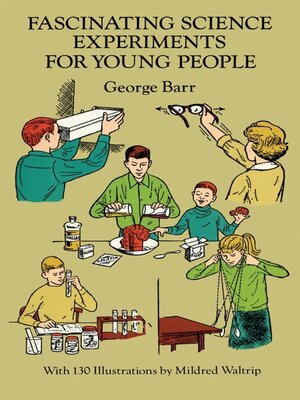Fascinating Science Experiments for Young People
ebook ∣ Dover Children's Science Books
By George Barr

Sign up to save your library
With an OverDrive account, you can save your favorite libraries for at-a-glance information about availability. Find out more about OverDrive accounts.
Find this title in Libby, the library reading app by OverDrive.



Search for a digital library with this title
Title found at these libraries:
| Library Name | Distance |
|---|---|
| Loading... |
This simply written introduction to scientific research and experimentation takes youngsters into an exciting world where they'll not only learn to discover their own answers to specific problems but will be encouraged to develop sound scientific attitudes and techniques as well. For this volume, noted science educator George Barr has compiled a carefully selected array of intriguing experiments dealing with chemistry, astronomy, magnetism and electricity, weather, water, the human body, living things, sound and light, and measurement. By performing these experiments, young researchers will discover the answers to such questions as "Why Can't We See Stars in the Daytime?" "How Can a Spider Web be Collected?" "Can Water Containing Ice Get Warm?" "How Can We See Sound Vibrations?" "What Helps Your Memory?" and many others. As the author early points out, the work is "not a reading book, but rather a doing book" with a chapter containing suggestions for further experiments. Valuable advice about scientific procedures emphasize the importance of taking readable, organized notes; gathering as much evidence as possible; learning to use "control" groups; and much more. In addition, over 100 illustrations enhance the text, which also contains a selected bibliography of relevant reading material.







